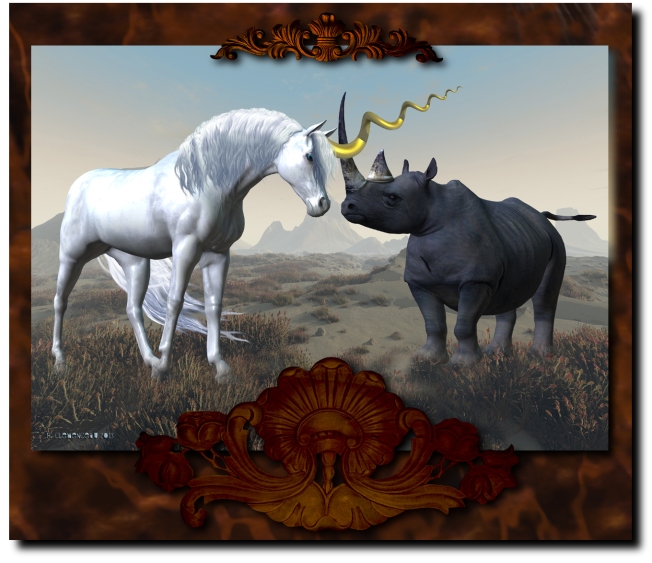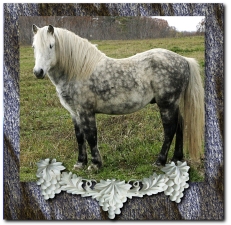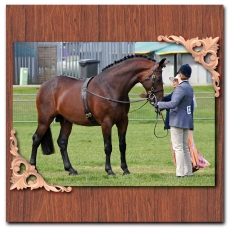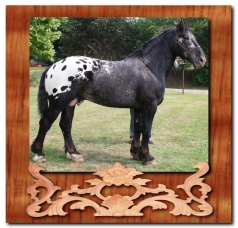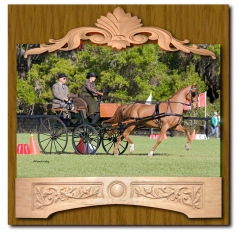Written by: Heather Clemenceau
Usually, I write my own text for a blog. But this time I feel that the message presented by Captain Paul Watson is so on-point and so precisely echoes what I am feeling now that I know that despite intense lobbying, Corey Knowlton has killed his Namibian black rhino. So I’m quoting Captain Watson’s excellent commentary directly. But before I do I want to say that there is absolutely no proof that hunting provides any positive conservation value nor does it enhance an ecosystem. Conservation success stories, like the Yellowstone National Park wolf recovery program, support the contention that ecosystems are highly complex and unpredictable by mankind. Hunting disrupts the natural equilibrium produced by nature when left to its own devices without interference from mankind.
Instead of true conservation, the hunting industry and conservation officials have an incestuous relationship where unacceptable practices are being enabled by the very official agencies that should be playing an independent monitoring or watchdog role. During an undercover League Against Cruel Sports investigation in spring 2004, Sir Edward Dashwood, director of the E J Churchill Sporting Agency, admitted to investigators that “90% of the trophy fee goes straight into some Nigerian’s pocket or African politician or whatever it is.”
Corey Knowlton – The Most Despicable Hominid of the Week
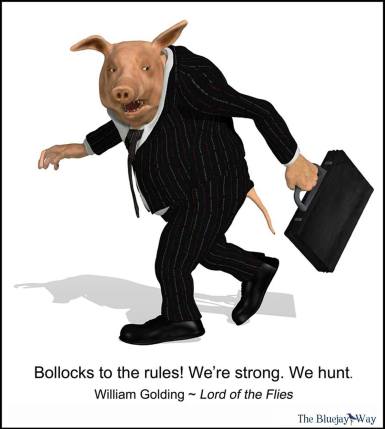 By Captain Paul Watson
By Captain Paul Watson
With one of the most delusional rationalizations of an ecological crime that anyone has ever attempted to present to the public, Corey Knowlton says that his killing of an endangered rhino was meant to bring awareness to the plight of the Black Rhino
When asked if he feels that killing this black Rhino was the right thing to do Knowlton replied:
“I felt like from day one it was something benefiting the black rhino, being on this hunt, with the amount of criticism it brought and the amount of praise it brought from both sides, I don’t think it could have brought more awareness to the black Rhino.”
This despicable excuse for a human being paid $350,000 for a permit to kill a Rhino issued by the corrupt government of Namibia, a country that licenses the slaughter of seals, giraffe, elephants and anything else that the world’s psychopaths have a lust to murder. He then has the audacity to describe the killing of an endangered species as an act of conservation.
If he really cared about conserving the Rhino he would have given the $350K to the underpaid rangers who risk their lives to protect the animals.
The rangers are the truly heroic men, not cowardly white hunters like Knowlton who simply pull a trigger to extinguish the life of a noble sentient being for no other reason than to stain the crotch of their pants.
“I think people have a problem just with the fact that I like to hunt,” Knowlton said. “I want to see the black rhino as abundant as it can be. I believe in the survival of the species.”
Right, and the way to increase the numbers of a rapidly diminishing small population of Rhinos is to kill one. The logic is so peversely bizarre that it could only come from a man who has more money than heart, who not only lacks empathy but seems to be completely devoid of common sense.
Knowlton actually is bragging that he has done more to defend the Rhino than all of his critics. This statement is simply nonsensical. This man clearly loves to kill and it has become a common justification for these psychopaths to justify their dark lethal passions with foolish pronouncements of pretentious conservation.
When poor Black Africans kill a Rhino the world is outraged and they are rightfully labeled as poachers. When a rich White person slaughters a Rhino, they call themselves conservationists.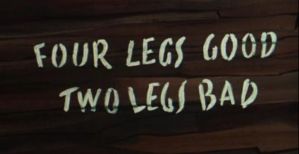
Men like Knowlton are a disgrace to humanity and they are very much a part of the problem.
Knowlton’s Namibian guide is named Hentie van Heerden. Another White man posing as a conservationist. His name reminds me of the evil Van Pelt in the movie Jumanji.
Van Heerden thinks that if the older and stronger Rhinos are not culled they will kill younger and healthier Rhinos and that will be bad for the species. You have to wonder how nature got by without White hunters to keep things under control.
According to van Heerden. “There will always be activists and that’s how they make their money,” he said. “They have no clout here in Namibia, because people understand hunting.”
No Hentie, the people in charge of conservation in Namibia understand money. And there is a reason for conservationists not having any clout there. I found out myself when we were working to stop the brutal slaughter of fur seals. It’s called corruption.
According to Knowlton, the Rhino he killed was one of four black Rhinos at the top of the government hit list, the ones considered “high priority threats to the herd.” They can also be classified as the one with the highest marketability in the murder market.
You see it’s not big White hunters like Know-It-All-Knowlton that that are the problem for the survival of the Rhino. It is the Rhinos themselves who are the greatest threats to the survival of the Rhinos.
Humans seemingly have an infinite capacity to justify their cruelty and their destruction.
To bolster his image as a great White nimrod, Knowlton states, “I think people think of it as this docile thing, but you are dealing with an extremely athletic animal that can do whatever it wants to you very quickly.”
The truth is that the Rhino is dealing with an extremely ruthless yet cowardly animal armed with an extremely lethal rifle.
Last year, one of Knowlton’s critics suggested the trophy hunting of a black Rhino was like shooting a couch in a living room.
This criticism annoys Knowlton. He’s always quick to bring it up with a heavy dose of sarcasm.
“So this is just like hunting a couch? Give me a break,” he said. “This isn’t easy. It’s brutal.”
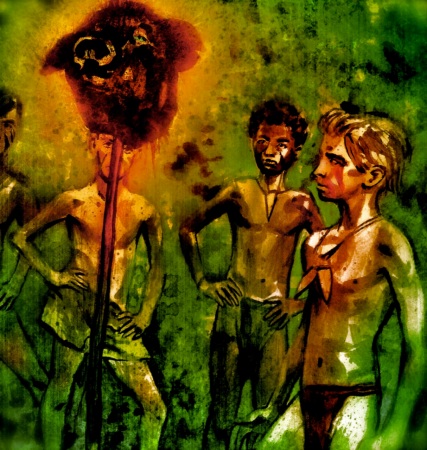 So brutal that they have to hike through thick shrub for hours during the day and actually sweat. It’s unlike the canned hunts these posers are used to, so I can understand his frustrations. In the evening instead of a comfortable luxury hotel, they have to endure the night in a tent with a staff to cook and serve drinks in plastic cups. The steaks are never done to perfection, and the night sounds of irritating wildlife, make sleeping a challenge.
So brutal that they have to hike through thick shrub for hours during the day and actually sweat. It’s unlike the canned hunts these posers are used to, so I can understand his frustrations. In the evening instead of a comfortable luxury hotel, they have to endure the night in a tent with a staff to cook and serve drinks in plastic cups. The steaks are never done to perfection, and the night sounds of irritating wildlife, make sleeping a challenge.
It could be more accurately described as hunting a couch being towed through the brush with sleep-overs with the boys and an opportunity to compare the size of their guns.
Knowlton found his victim thanks to cameras set up near watering holes and a gashed ear inflicted by the government to the animal, as a sign that it can be “legally” murdered.
Four shots, a roar of pain and the animal runs. A half an hour later the Rhino lies on the ground. Three more shots and Knowlton gets to kneel over his victim. He says, “Any time you take an animal’s life it’s an emotional thing.”
You can see the self-satisfied emotion in his smug grin as he straddles the corpse, his crotch wet, his fingers encircling the barrel of his high-powered 500 Nitro Express rifle as the smoke still oozes from the muzzle.
Beneath lies a creature far more noble than it’s killer, an animal that a few moments ago was intensely alive in it’s home environment, an animal that was respected amongst his own kind, a vibrant, sentient, self aware member of a diminishing species.
Knowlton will decapitate the Rhino, the head to be shipped off to a taxidermist and transported back to Texas where this notoriously craven nimrod can mount it on his wall as a trophy like any other psychopath.
The memory will suffice for a time but Knowlton will soon feel the urge to kill like any other serial killer and yet another trophy will be placed on his wall in his never ending quest for sado–erotic satisfaction to sustain his disturbing addiction.

